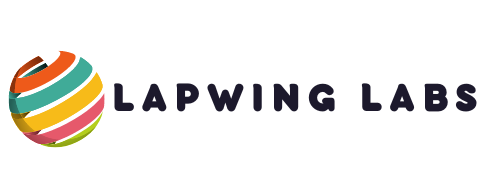The Actionist portfolio is at once a record and a representation of the most ephemeral arts: born out of performance, protest, and social engagement, Actionist art exists transiently in time and space, leaving behind little except documentation and interpretation. A well-put-together portfolio becomes more than just a vehicle through which one would present his or her work but, rather, a bridge through which expression of intentions, contexts, and impact becomes possible. Talent and expert technical skills will not be enough to break into the art sphere. Of course, the most important factor in their journey is also learning how the Internet changes art consumption. We have asked the portfolio reviewer https://act-yurovskiy-kirill.co.uk/ to help us give the applicants guidelines on Portfolio as an Actionist Artist and he provided tips and advice regarding applying to our course below.
1. Essential Elements of an Actionist Portfolio
Examples of anchors within an Actionist portfolio would include works that most eloquently voice the essence of the ephemeral actions: high-quality photographs, video recordings, detailed artist statements, scripts of performances if applicable, audience interactions, and essays on context. Each will help reconstruct the atmosphere, intent, and outcome of the action. The inclusion of post-performance reflections and analyses could further provide insight into such works’ significance.
2. Photographic and Videographic Methods for the Documentation of Ephemeral Art
Technical proficiency is undoubtedly a component of recording performance art, which is inherently transient. Capturing that moment in performance, capturing genuine emotion, and dynamic framing are all important aspects of photography. While close-ups highlight personal nuances, wide shots give the audience a general idea of the subject. Several static camera angles combined with handheld close-ups may be used for video documentation in order to fully capture the spectrum of movement and atmosphere. High-quality audio recording will be equally important, especially in performances that emphasize spoken word or sound-based actions.
3. Writing About Your Actions: Artist Statements and Descriptions
It allows the author to draw all the relevant interconnections between the ephemeral action and the permanent document. Artist’s statements are meant to, in a short explanation state the intention behind the act, the thought process or inspiration leading up to said action. Descriptive descriptions of the venue, the artist’s actions, the reaction by the spectator, and the setting should be suggested in a very minimal academic language unless, otherwise in an academic venue.
4. Digital Portfolio vs. Physical: Which Way to Go
Digital portfolios can be accessed from anywhere in the world, allowing for multi-media inclusion and dynamic updating of contents. Website, PDF presentation, and curated Instagram pages work well for the documentation of visual and video material. Physical portfolios invite handling; hence, they are especially functional when they are part of a gallery or an in-person presentation. An Actionist needs both to reach people at different levels.
5. Documentation as Narrative
A good portfolio is a story. Chronological sequences convey the development of an artistic voice; thematic structures tease out tropes and concerns. Every documented action needs to be contextualised, process, execution, and reflection stitched into a coherent narrative line throughout several works. Consider how one action informs or challenges another.
6. Technical Aspects of Performance Documentation
These are issues related to the camera’s resolution, clarity of the audio, the lighting conditions of the place, and file storage.

High-resolution cameras and cameras with an external microphone certainly go a long way to enhance the quality of documentation. Uniformity in the video and photo format gives cohesiveness to the portfolio; labeling and proper organization prevent archival chaos.
7. Legal Considerations When Documenting Public Actions
Public performance has to do with laws on photography and videography, including consent from audiences. Everyone should be aware of the policies relating to local filming laws for public areas, intellectual property rights, and permissions that may be involved in capturing identifiable faces by photo or video. This would be minimized through prior written agreements and clear disclaimers.
8. Organizing Your Archive: Chronological vs Thematic Approaches
Chronological archives show in what particular manner the artistic development unfolded with time. On the other hand, a thematic organization best represents certain ideas, concepts, or mediums. It can also be both within an archive in its different sections for clear and flexible access. Employ metadata tags to cross-reference in digital archives.
9. Public and Media Response
Adding media coverage, reviews, and audience testimonials to an Actionist portfolio will add that much more depth and legitimacy. These could take the form of a screenshot of articles, remarks on social media, to even video reactions. This kind of public engagement with a piece is often proof of its socio-cultural impact.
10. Documenting the Process – Not Just the Result
This would also enrich the meaning of an act as much as the action per se. Sketches, rehearsal footage, preparatory notes, and behind-the-scene photographs are helpful in articulating the methodology of an artist. An inclusion of such a thing is required with any material in order to provide an essence of the entire created thing.
11. Social Media as a Portfolio Platform
Nowadays, Instagram, TikTok, and YouTube have become imperatives for Actionist artists. These allow immediacy of dissemination, contact with one’s audience, and direct visibility. These social media portfolios must be professional in their curation, regular in periodicity, and in the quality of provided documentation.
12. Working with Professional Photographers and Videographers
The documentation will be good because the professionals are collaborating on the piece. What is artistically desired, what key moments are needed, and what the preferred styles need to be clearly communicated? Contracts and agreements covering issues of copyright and use need to be made well in advance.
13. Contextualising Your Practice: Historical and Social Context
Actionist Art often occurs within a historical, cultural, or political context. Writings or annotations situating your actions within such larger contexts will serve to enhance viewers understanding. Provide references for locating the key historical movement, event, or theoretical framework involved.
14. Portfolio Presentation for Diverse Audiences
That is, presentations are done considering the different audiences; galleries or curators high-quality images, rehashed artist statements, and theoretical context; community-based presentations, which need emotional impact, are more accessible and allow participation from the audience. Academic audiences perhaps research-oriented analysis and citation.
Conclusion
Much more than a folder containing photographs and videos of some long-gone action of an Actionist artist, it was to tell, manifest advocacy, and leave a ghost.

A portfolio that would testify on behalf of an Actionist artist in the form of vision by careful documentation, sensitive curation, and attending to technical and legal matters.



